一、日期和时间
1.生成指定格式日期和时间

标准日期格式
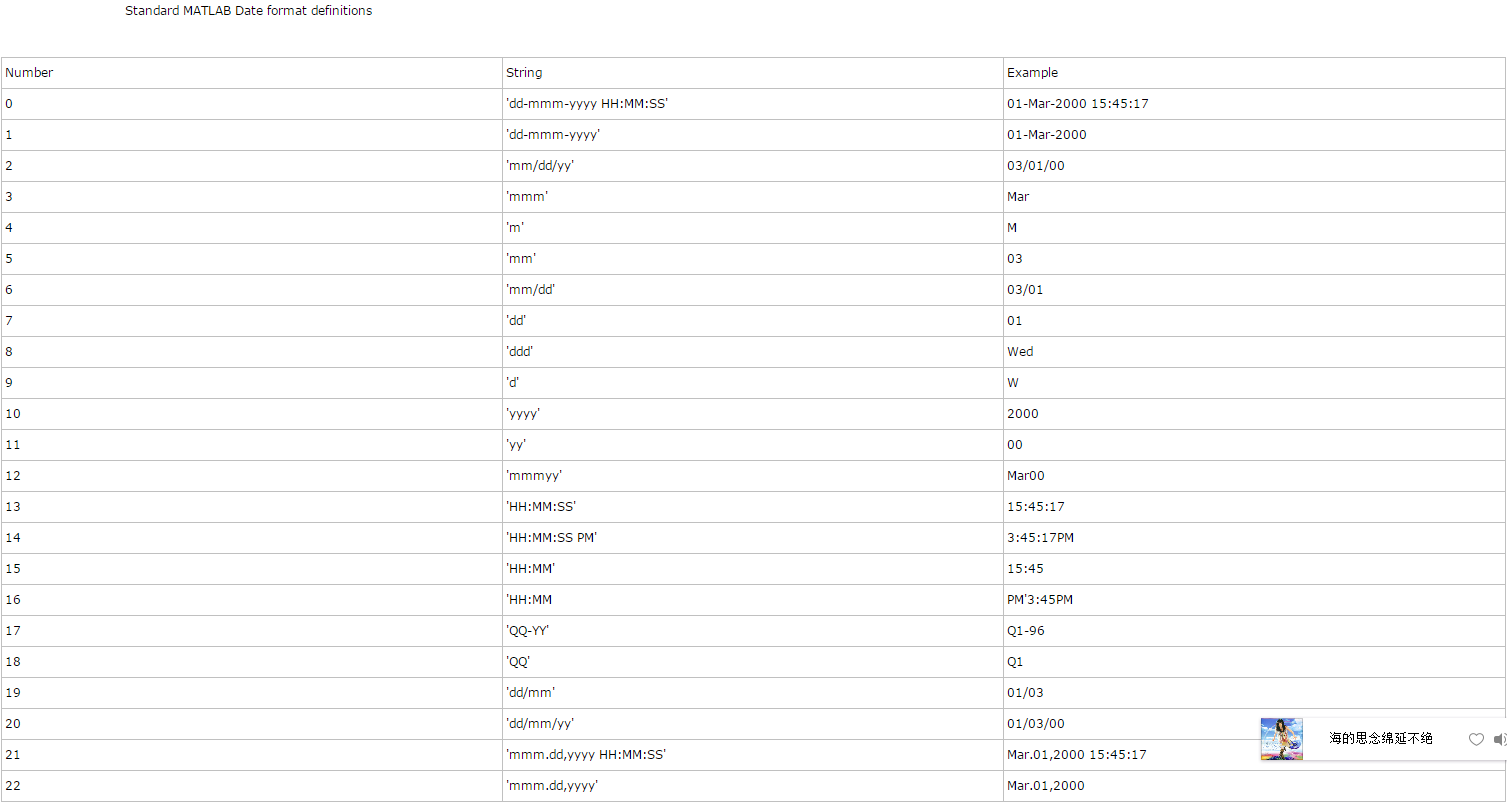

2.获取当前时间的数值
>> datestr(now,31)
ans =
2017-09-11 19:56:26
>> datestr(now,'yyyy-mm-dd HH:MM:SS')
ans =
2017-09-11 19:58:28
>> clock
ans =
1.0e+03 *
2.0170 0.0090 0.0110 0.0200 0.0030 0.0264
>> datestr(now,'HH:MM:SS')
ans =
20:05:07
>> format short g
>> clock
ans =
2017 9 11 20 5 42.98
>> now=fix(clock)
now =
2017 9 11 20 9 16
上述转化为向量形式,可以随意调用年月日时分秒
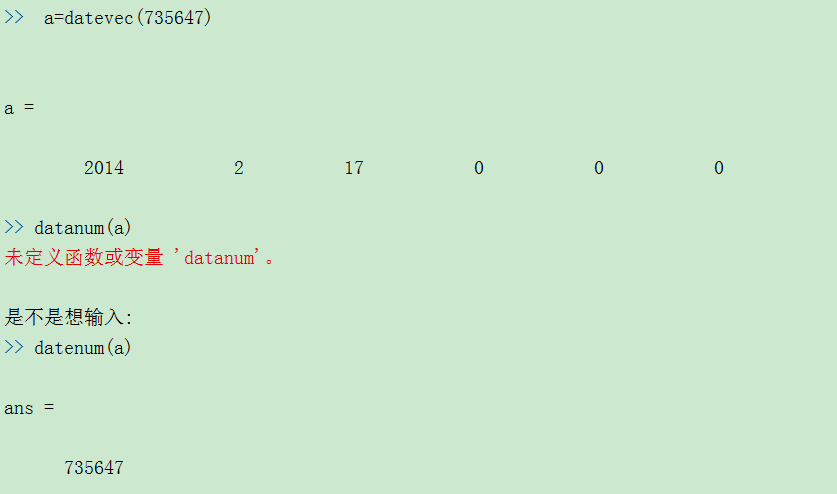
向量和天数转化
3.其他时间和日期函数或命令
>> date
ans =
11-Sep-2017
从公元0年到现在的天数
>> n=datenum(now)
n =
7.3695e+05
>> fix(n)
ans =
736949
>> today
ans =
736949
clear all
DateString = '19-May-2001';
formatIn = 'dd-mmm-yyyy';
datenum(DateString,formatIn)
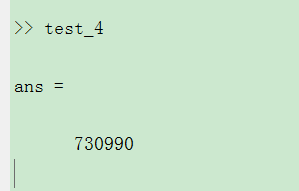
向量向字符串转变
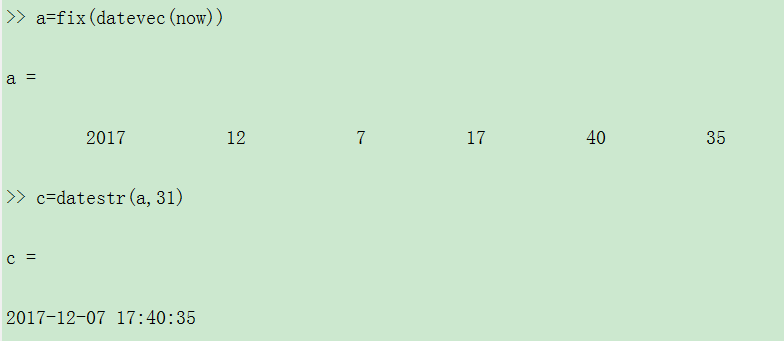
两次时间差(测试函数运行时间的函数)
>> t0=clock
t0 =
2017 9 11 20 27 56.81
>> etime(clock,t0)
ans =
18.8
>> t1=clock
t1 =
2017 9 11 20 28 33.745
>> etime(t1,t0)
ans =
36.935
利用占用CPU时间差,来进行时间差计算
>> t=cputime;
>> T=cputime-t
T =
0.3276
tic/toc
>> tic%开始计时
>> toc%结束计时
时间已过 1.945333 秒。
星期值
>> weekday(today)
ans =
2
>> [a,b]=weekday(today)
a =
2
b =
Mon
>> [a,b]=weekday(today,'long')
a =
2
b =
Monday
某月的天数
eomday(2017,9)
ans =
30
某年的天数
>> yeardays(2017)
ans =
365
月份表
>> calendar Sep 2017 S M Tu W Th F S 0 0 0 0 0 1 2 3 4 5 6 7 8 9 10 11 12 13 14 15 16 17 18 19 20 21 22 23 24 25 26 27 28 29 30 0 0 0 0 0 0 0
>> calendar(2017,10)
Oct 2017
S M Tu W Th F S
1 2 3 4 5 6 7
8 9 10 11 12 13 14
15 16 17 18 19 20 21
22 23 24 25 26 27 28
29 30 31 0 0 0 0
0 0 0 0 0 0 0
4、时间坐标转换函数 datetick函数
clear all
t = (1900:10:1990)';
p = [75.995 91.972 105.711 123.203 131.669 ...
150.697 179.323 203.212 226.505 249.633]';
figure(1)
subplot(211),bar(t,p)
subplot(212),bar(datenum(t,1,1),p)
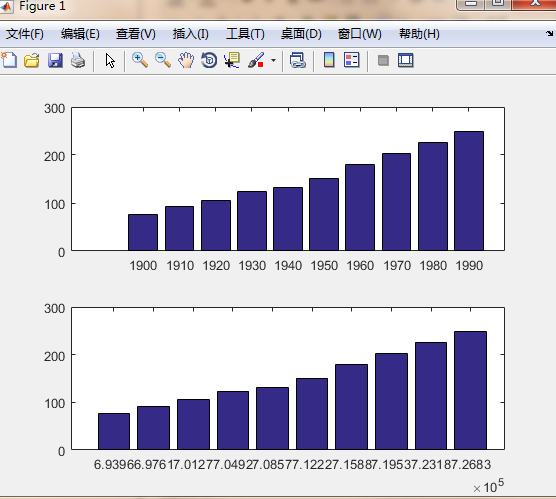
clear all
t = (1900:10:1990)';
p = [75.995 91.972 105.711 123.203 131.669 ...
150.697 179.323 203.212 226.505 249.633]';
figure(1)
subplot(211),bar(t,p)
subplot(212),bar(datenum(t,1,1),p)
dateFormat = 11; %'yy'形式
datetick('x',dateFormat); %将x坐标的值换为,yy形式

figure
subplot(211),plot(n,t);
subplot(212),plot(n,t);
datetick('x','HH:MM');
grid on
